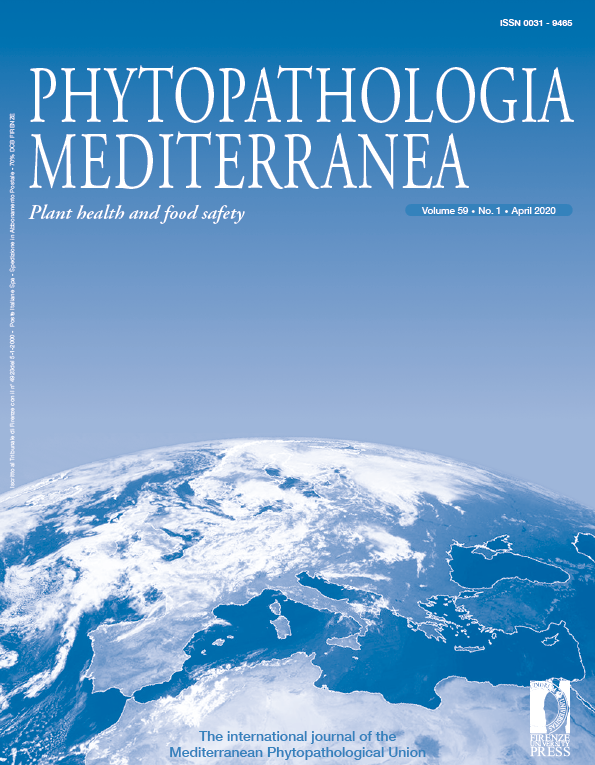Published 2020-03-14
Keywords
- Multigene analysis,
- pathogenicity,
- disease symptoms
How to Cite
Abstract
Since 2013 an Alternaria disease has been observed in Italy on new clones of sweet orange and lemon, during pre-harvest stages. Isolations were made from diseased leaves and fruit collected from these hosts and from other known Alternaria hosts (Citrus x clementina, Citrus reticulata ‘Mandalate’ and Citrus sinensis ‘Valencia’). The typical small-conidium Alternaria species was consistently isolated from symptomatic tissues. One hundred and sixty-two Alternaria isolates were recovered from 15 citrus orchards in Catania, Syracuse and Palermo provinces, and 148 of these were used for multigene phylogenetic analyses based on the glyceraldehyde-3-phosphate dehydrogenase (GAPDH) and translation elongation factor 1-α (EF-1α) genes. Most of the characterized isolates (97.3%) belonged to the A. alternata clade, and the remainder were A. arborescens. Pathogenicity tests of 49 isolates of A. alternata and one of A. arborescens were performed on young detached leaves and on detached immature fruit of orange, lemon, calamondin, and rangpur lime. Toxicity of culture filtrates of representative isolates on detached leaves was also evaluated. In addition, pathogenicity tests were carried out on immature fruit in planta under controlled environment conditions. Most of the isolates (72%, including A. alternata and A. arborescens) were pathogenic on all inoculated citrus species and caused brown spot symptoms identical to those induced on tangerine. This study demonstrates the ability of A. alternata to cause damage in the field on new and popular clones of sweet orange and lemon. The hypothesis is supported that secondary metabolites, in addition to the ACT-toxin or ACR-toxin, could play roles in Alternaria spp. pathogenicity to citrus hosts.






